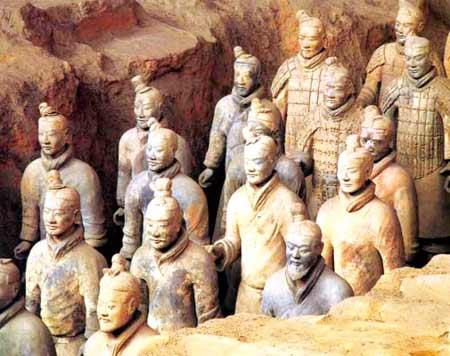
 |
| Mausoleum of the First Qin Emperor (CNTV) |
Watch Video: Qin Shi Huang Mausoleum
Date of Inscription: 1987
World Cultural Heritage: Mausoleum of the First Qin Emperor
Chinese Name: Qin Shi Huang Ling
English Name: Mausoleum of the First Qin Emperor
Approval Date: December, 1987
Heritage Category: Cultural heritage
Selection criteria: Based on the standards C(I)(III)(IV)(VI) for selecting cultural heritage, the Mausoleum was listed in the World Heritage List.
Evaluation of the World Heritage Committee:
Out of question, if the Mausoleum of the First Qin Emperor was not found in 1974, the 1,000 terracotta warrior statues in this archaeological site would still be sleeping underground. The First Qin Emperor, the emperor who united China for the first time, died in 210 B.C., and was buried in the center of Mausoleum. Around his body were those well-known terracotta warriors. The complex Mausoleum of the First Qin Emperor was built in accordance with the layout and design of Xianyang, the capital of his empire. The terracotta warriors which are a little smaller than human size are various in different shapes. Together with their horses, chariots, and weapons, they have become perfect masterpieces of realistic art and have also retained extremely high historical value.
Introduction:
The Mausoleum of the First Qin Emperor was the grave of Ying Zheng (259 B.C–210 B.C.), the first emperor of China’s history. It is located at the northern foot of Lishan Mountain, five kilometers to east of the county seat of Lin Tong County, Shaanxi Province, in the northern part of China. The mausoleum was built between 246 B.C. and 208 B.C., the construction lasted 39 years. It was the first large-scale and perfectly-designed emperor tomb in China’s history.

















 Rainstorms flood more than 10,000 cars in underground garages in Wuhan
Rainstorms flood more than 10,000 cars in underground garages in Wuhan


![]()
